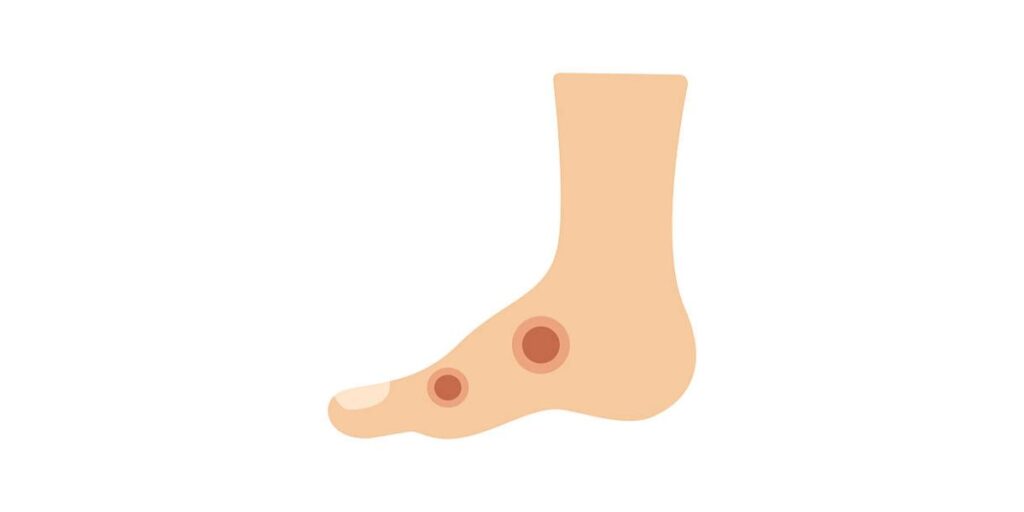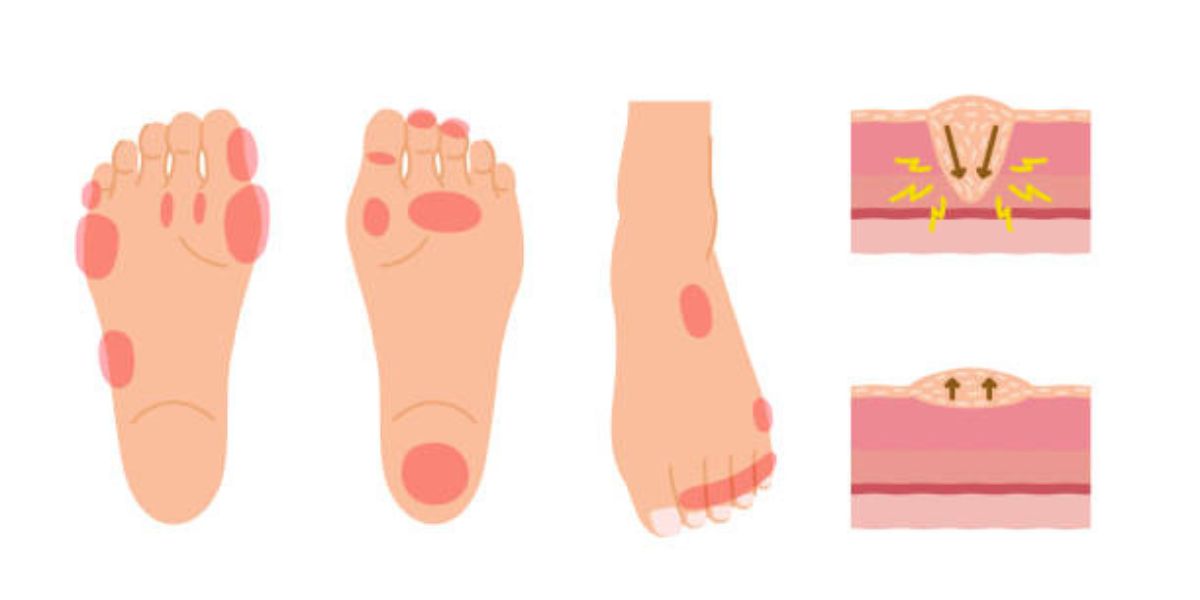What Are Diabetic Foot Ulcers?
Living with diabetes comes with many challenges, but one of the most serious is dealing with diabetic foot ulcers. These open wounds don’t just cause discomfort—they can lead to severe infections or even amputations if not treated early. That’s why understanding the right diabetic foot ulcer treatment is so important. In the United States, thousands of patients suffer from foot ulcers in diabetics, especially those with poor circulation or nerve damage. Effective care combines diabetic wound healing, infection control, and pressure relief. With proper treatment, many people can avoid surgery and recover fully. This guide will walk you through the best approaches to advanced wound care and help you regain control of your foot health.
Who Is at Risk of Getting Diabetic Foot Ulcers?
Anyone with diabetes, especially those with uncontrolled diabetes, runs a higher risk. Obesity and diabetes, smoking and diabetes, or diabetic nerve damage make foot problems worse. Even minor injuries, sometimes from ill-fitting shoes, can lead to serious trouble due to diabetic trauma.
Adults with long-term Type 1 or Type 2 diabetes often face diabetes foot complications. If they also have poor circulation or nerve damage, the risk grows. Age, inactivity, and co-existing health issues push that risk even higher in the USA and beyond.
How Do Diabetic Foot Ulcers Develop?
Ulcers form when nerve damage stops you from feeling small cuts or pressure points. This is how neuropathic foot ulcers start. Pressing heels or tight shoes create sores. Without treatment, these wounds deepen and get infected. That’s where neuroischemic wounds come into play—lack of both nerves and blood flow.
In some cases, especially for older adults with vascular disease, ischemic ulcers occur. These result from poor blood flow rather than nerve issues. Both types pose serious hazards when high blood sugar levels weaken your immune system, making healing slower and infection more likely.
Why Prompt Treatment Is Essential
Ignoring foot wounds can lead to deep infections and even amputation. These ulcers on diabetic feet are dangerous because they often drain infected fluid and can smell bad. The signs of infection in ulcers—warmth, redness, and fever—must never be overlooked.
Early diabetic wound care saves lives and limbs. The Diabetic foot treatment USA market emphasizes quick diagnosis to avoid hospitalization. Studies show prompt treatment improves success rate of diabetic ulcer treatment by up to 70 percent and cuts long-term costs considerably.
Effective Nonsurgical Treatments for Diabetic Foot Ulcers
Good diabetic wound healing starts with gentle cleaning and applying moist wound dressings. These protect the sore and keep it flexible. Doctors often prescribe topical antibiotics to fight or prevent infection. In more severe cases, they may use wound debridement to remove dead tissue and promote healing.
Advanced methods include total contact casting or offloading pressure shoes. These reduce stress on the ulcer site. Hyperbaric oxygen therapy is an option when wounds resist other treatments. Some people benefit from negative pressure therapy too. And custom diabetic footwear supports your foot and prevents recurrence.
Surgical Options for Severe Cases
When nonsurgical methods fail, surgeons may step in. Debridement removes infected skin. Sometimes, blocked blood flow requires bypass surgery or angioplasty. These advanced wound care methods reopen blood vessels, helping ulcers heal. In rare situations, amputations are needed to stop infection spread.
Post-surgery, patients need rest and more moist dressings and therapy. Recovery often involves physical therapy and regular podiatrist checkups to prevent ulcers from returning.
Essential Home Care Practices for Healing
Care at home matters a lot. Use daily at-home wound care routines, cleaning ulcers gently and changing diabetic dressings to avoid infection. Inspect your feet every evening for cuts or redness, part of a healthy daily foot inspection.
Watch for healing signs like smaller edges or less drainage. These are signs of healing foot ulcers. Wear soft, breathable shoes to protect the sore. If fever or swelling appears, contact a doctor right away—that’s when infection prevention tips become lifesaving.
Key Factors That Affect Healing Time
Several issues determine how quickly a sore heals. First, managing blood sugar is vital. High glucose hinders healing. Adequate nutrition, good circulation, and rest also matter. Factors affecting ulcer healing include your overall health and how closely you follow treatment plans.
Patients who eat balanced meals, avoid smoking, and follow care routines heal faster. Regular checkups and prompt reporting of new problems also improve healing. Recovery times range from weeks to months, depending on how severe the ulcer is and which long-term diabetic wound management steps are taken.

Best Athletes Foot Treatment at Home: Simple & Natural Remedies
How to Prevent Diabetic Foot Ulcers
Prevention comes from daily habits. Clean feet gently, inspect them for changes, and apply moisturizer. These are simple diabetic foot care tips. Invest in choosing diabetic shoes designed to reduce pressure in key areas.
Stay in shape with exercise and control your blood sugar. That helps with diabetic foot health and lowers risk. Visit a foot doctor regularly. These podiatrist checkups catch issues early. Small lifestyle tweaks, like quitting smoking or losing weight, make a big difference in how to prevent diabetic ulcers.
FAQs
What is the best treatment for a diabetic foot ulcer?
The best treatment combines wound cleaning, moist dressings, offloading pressure, and managing blood sugar levels.
What is the fastest way to heal a foot wound?
Keeping the wound clean, using topical antibiotics, and relieving pressure helps speed up healing.
What is the first line treatment for diabetic foot ulcers?
Initial treatment includes wound debridement, infection control, and moist wound care under medical supervision.
What is the new treatment for diabetic foot ulcers?
Innovative options like hyperbaric oxygen therapy and negative pressure wound therapy are showing promising results.
Welcome to Heel Tooth! I’m Lee Marvin.

